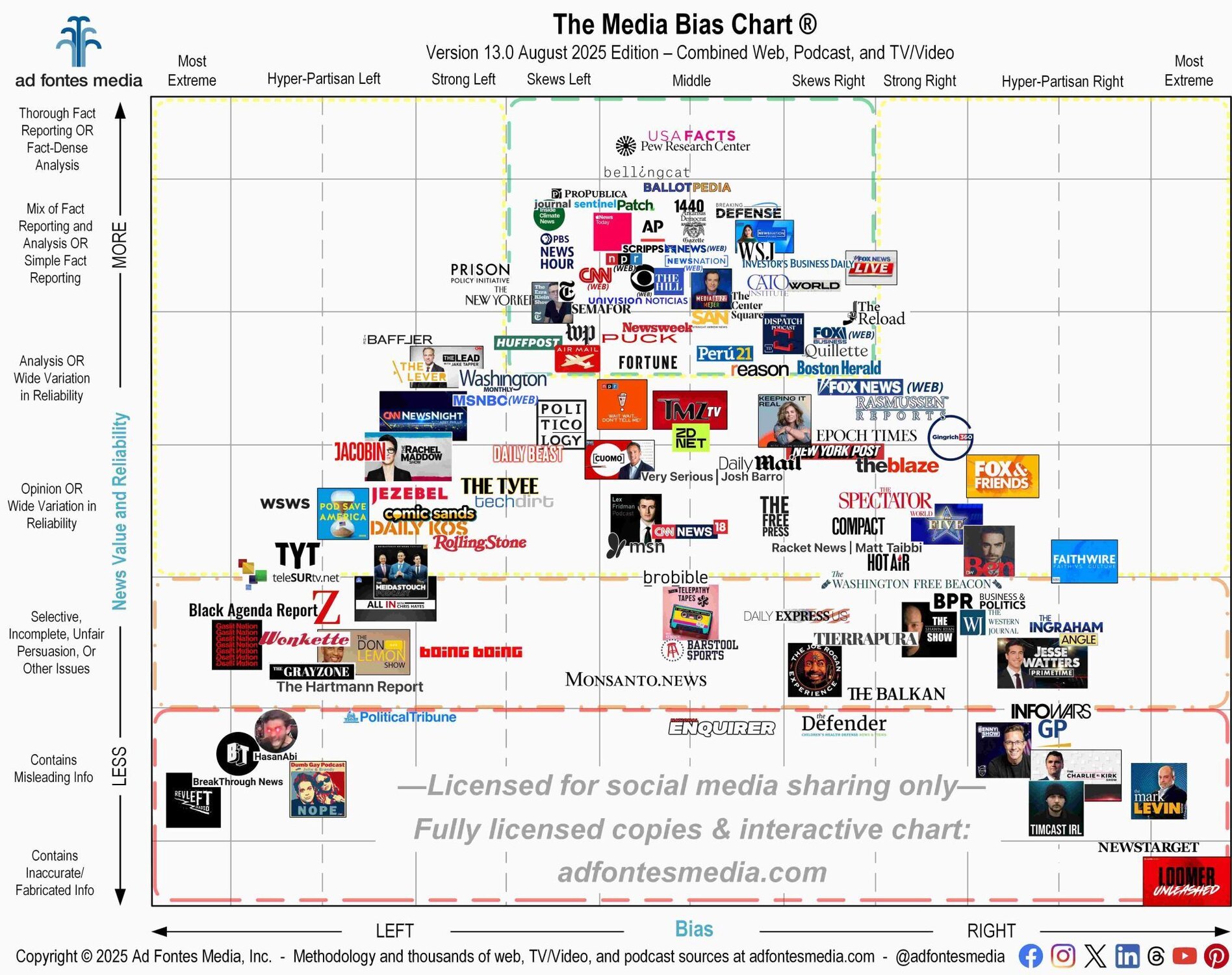USAFacts and bias: Why we care about nonpartisanship
USAFacts earned the highest marks on a third-party bias test.
USAFacts is here for a clear reason — to make information about the US government accessible to the public, so that people can make informed decisions on how the government is representing their interests.
That Americans deserve access government data without political or corporate influence is baked into our mission. As a non-government, nonprofit organization, we are in a unique position to deliver information without the same motivations as a private corporation or a partisan advocacy organization.
Ad Fontes Media, which rates media on reliability and partisanship, publishes a periodic report scoring media companies and organizations by their trustworthiness and political leaning.
In the most recent version of their Media Bias Chart, released in August 2025, USAFacts earned the highest reliability rating and the lowest bias score on the entire chart. We’re proud that Ad Fontes’s methodology sees our work at USAFacts as reliable and nonpartisan.

Ad Fontes publishes a detailed methodology on how they determine the scores, which includes analysts across the political spectrum rating articles based on bias in politics, language, and more. As always, we encourage you not just to take someone else’s word for it. Take a look at the data and analysis USAFacts publishes and make your own determination.